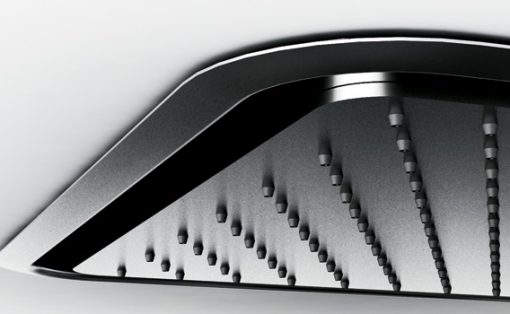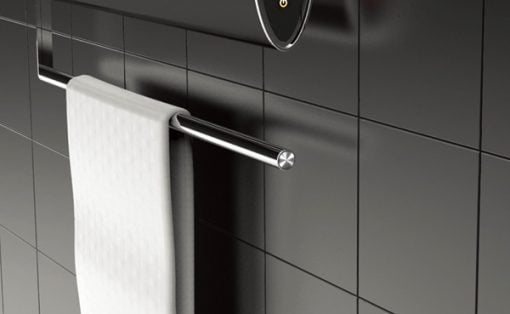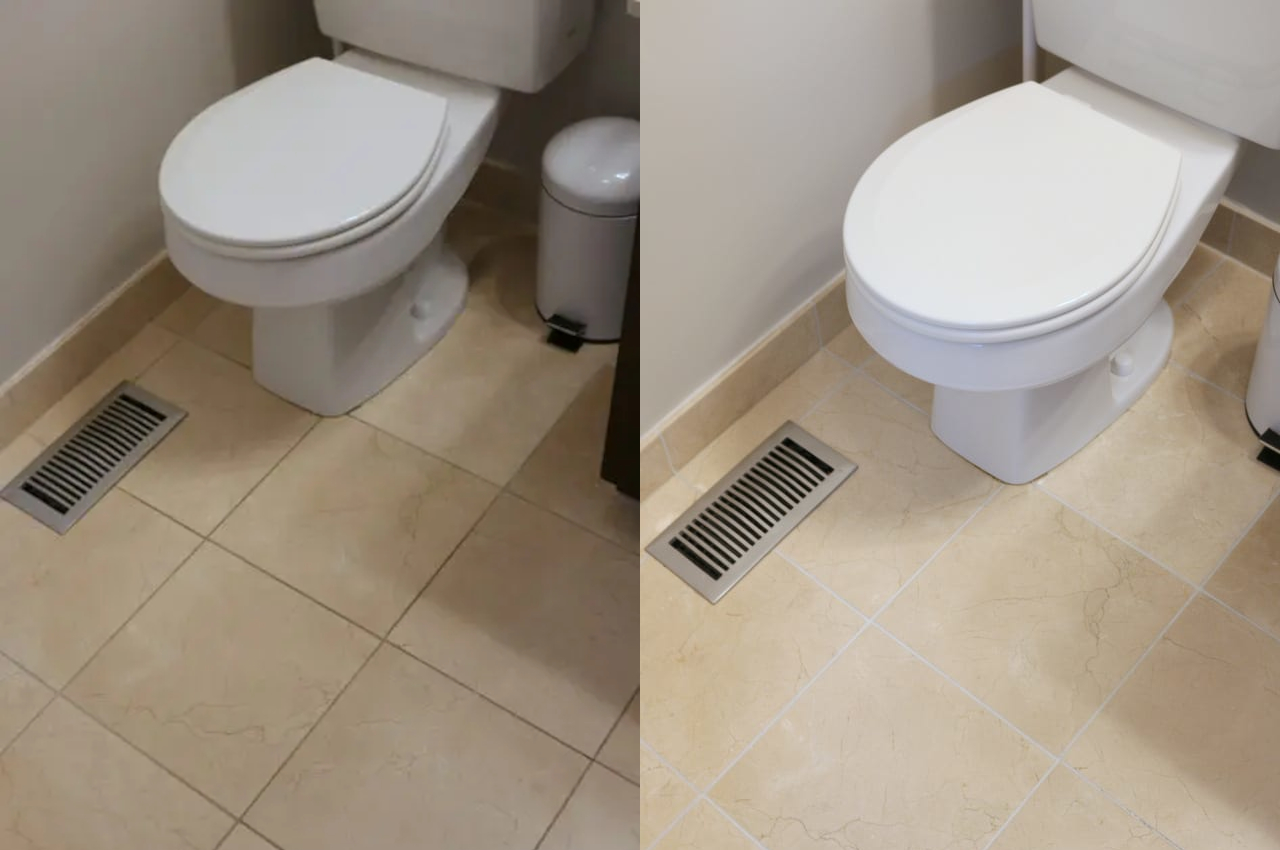
As dirty grout between tiles can make any kitchen or bathroom look unappealing, it is important to periodically clean the tiles to eliminate mold and mildew and restore the grout to its original condition. Although it is easy to clean tiles, the crisscrossing lines of grout tend to attract moisture-loving bacteria. If one neglects to clean the grout, soap, and shampoo residue or mold and mildew, the color of the grout can change into a blackish tinge. Even in kitchen areas, while mold may be less of a concern, grouting can still look grimy due to splashes of food or washing up liquid.
Designer: The DIY Playbook
What is tile grout?
Tile grout plays a highly functional role as it fills the gaps and seals the joints between the tiles preventing them from shifting from their position or developing cracks. Grout can be classified into cement grout which is a cementitious powder mixture, and epoxy grout which is composed of epoxy resins and a filler powder. Note that the porous nature of cement grout makes it susceptible to water absorption as it develops stains and can get discolored over time, while epoxy grout is more durable and non-porous which makes it highly resistant to stains.
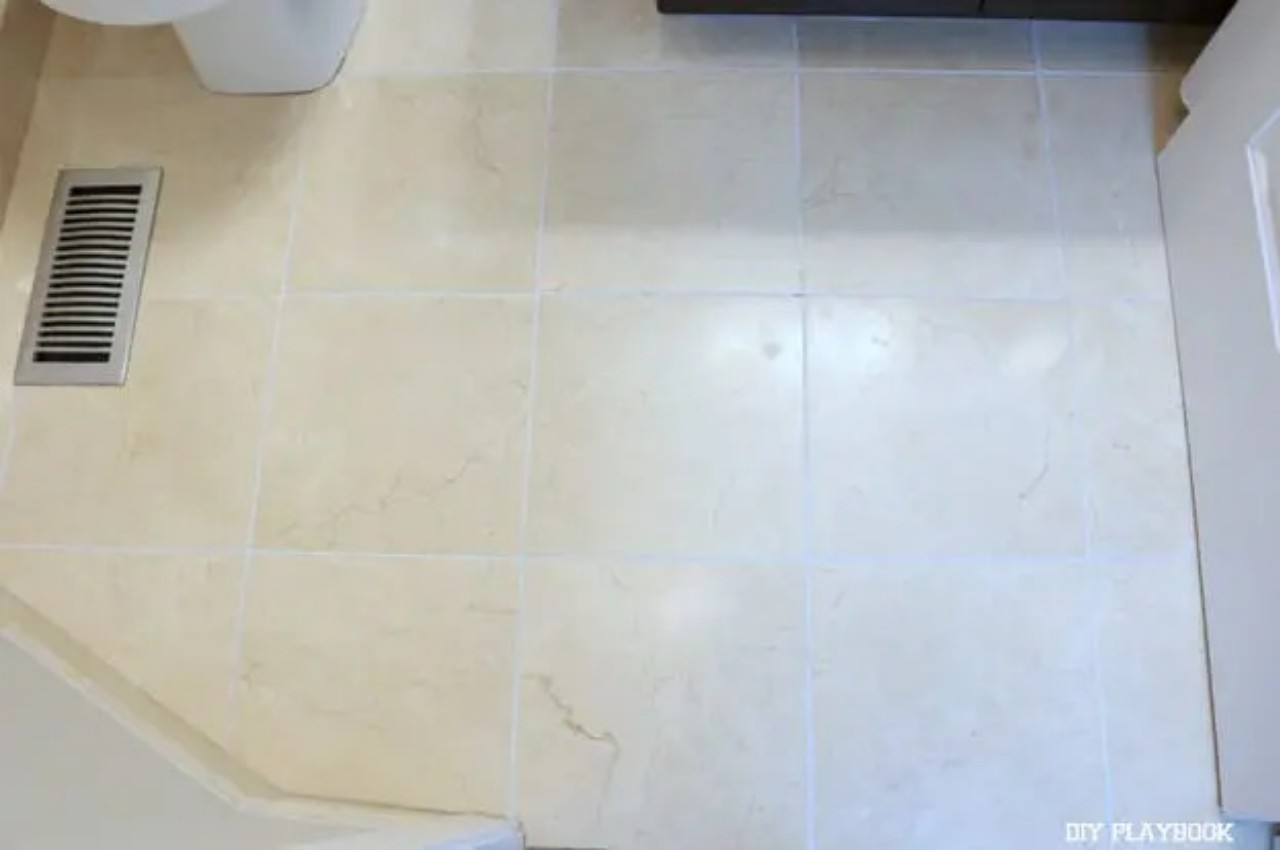
Here are some foolproof methods for cleaning grout in tiles, regardless of their location in your home. These methods are effective in breaking down mold and bacteria and restoring grout to its original sparkly white appearance.
Apply Grout Cleaner
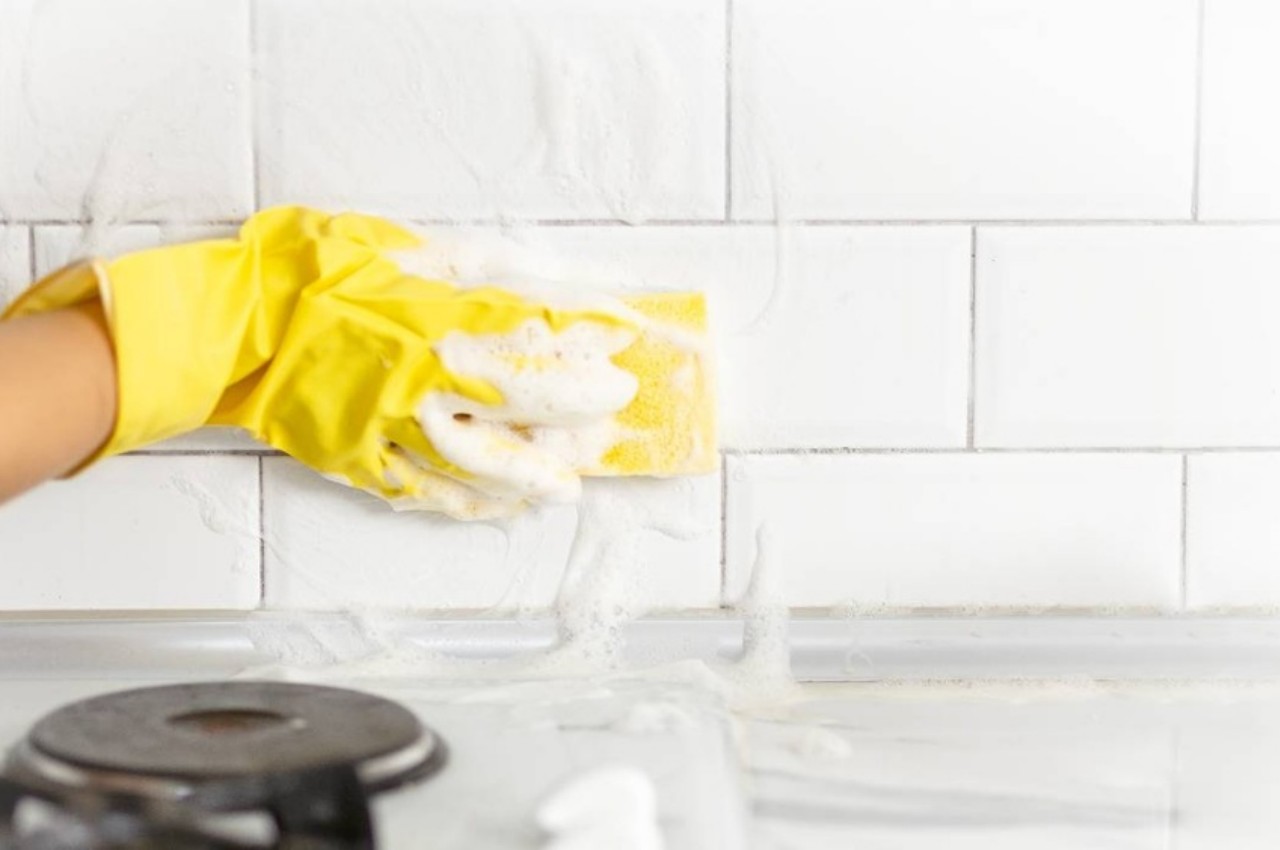
Via: Which?
Use a commercial grout and tile cleaner according to the manufacturer’s instructions on the dirty areas of the grout. After cleaning, use a sponge, cleaning rags, or microfiber cloths to rinse and wipe each area. Ensure that no residue from the grout cleaner remains. If you are cleaning grout and tiles on the floor, mop the entire floor when finished.
Use Bleach
Bleach is highly effective for tackling stubborn mold and grime on grout. However, it should be used sparingly and reserved for tough grout stains, as excessive use can cause fading of the grout color. Before starting, ensure good ventilation by opening windows or doors.
There are two methods for using bleach when cleaning grout in tiles. First, you can apply it directly by pouring a small amount into a cup and using an old toothbrush to scrub the grout. An alternative method for cleaning grout in tiles involves creating a paste by mixing bleach and bicarbonate of soda until it resembles toothpaste consistency. Once the paste is ready, apply it to the grout and let it sit for 15 minutes before using an old brush to scrub away the paste and then allow the grout to air dry for a pristine finish.
Use Lemons
Lemons, with their natural acidity, serve as excellent cleaning agents, particularly effective for tackling discolored or stained grout. To use this method, take a fresh lemon and slice it in half, then run the juice along the grout lines. Allow it to sit for at least 15 minutes, and then use a clean toothbrush to scrub the grout. Finally, rinse away the lemon juice with warm water and pat the area dry with a clean towel.
Hydrogen Peroxide
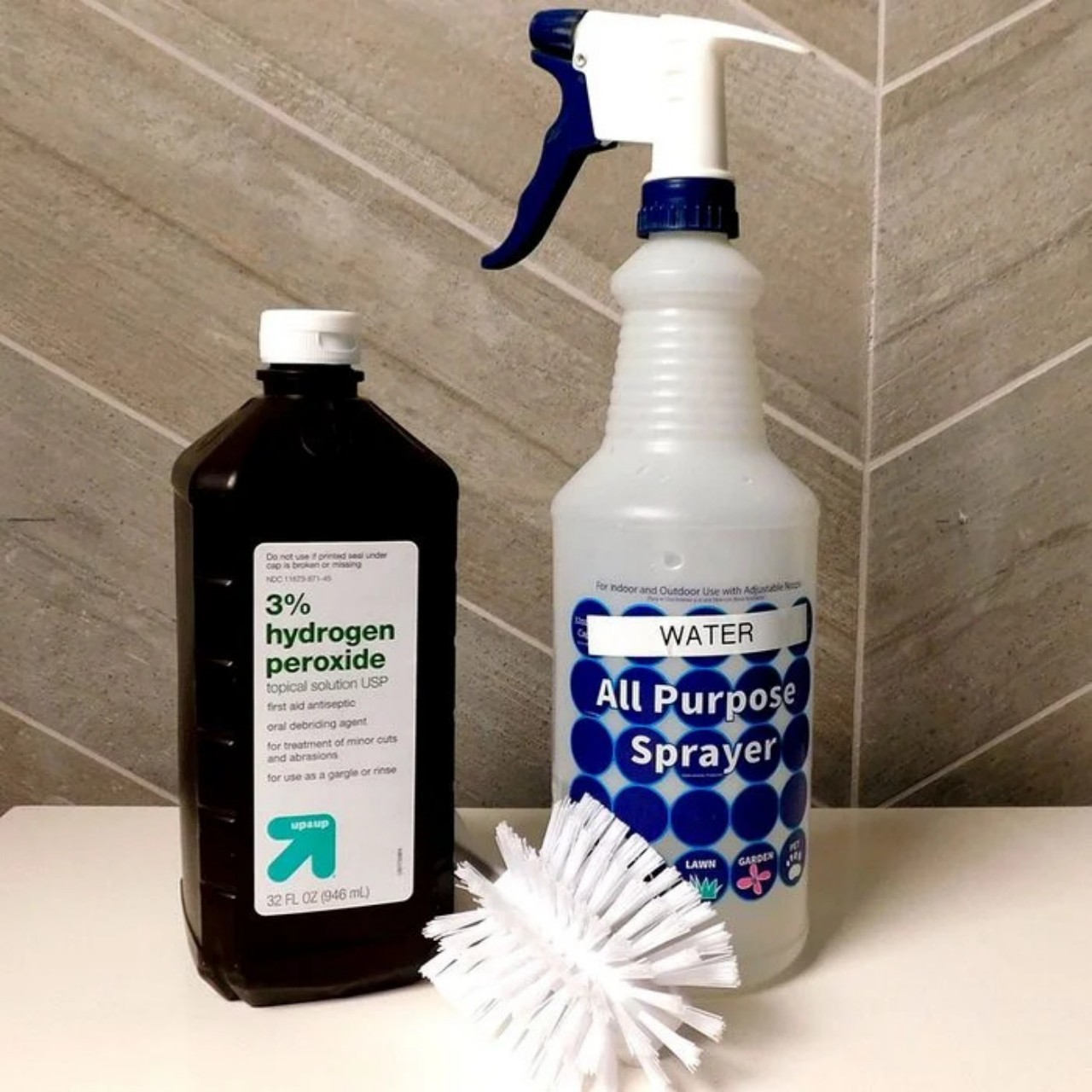
Designer: Family Handyman
For moderate stains on tile grout, spray hydrogen peroxide on the grout lines, scrub with a bristle brush, rinse with warm water, and wipe the surface clean. Alternatively, you can make a paste using hydrogen peroxide and baking soda, apply it to the grout, let it sit for some time, and then clean the grout lines with a brush before rinsing with warm water.
Baking Soda and Vinegar

Via: Iakobchuk
The use of baking soda and vinegar is a highly effective home remedy for removing stains from the tile grout. Make a paste of baking soda and water and apply it on the grout lines and then spray a mixture of vinegar and water on the baking soda paste. This will initiate a reaction between both substances and transform into a thick and foamy mixture. After the bubble formation stops, it transforms into a thick foamy mixture. Next, take an old brush and scrub the grout to eliminate the buildup. Finally, rinse it with warm water and complete the cleaning process.
White Vinegar and Water
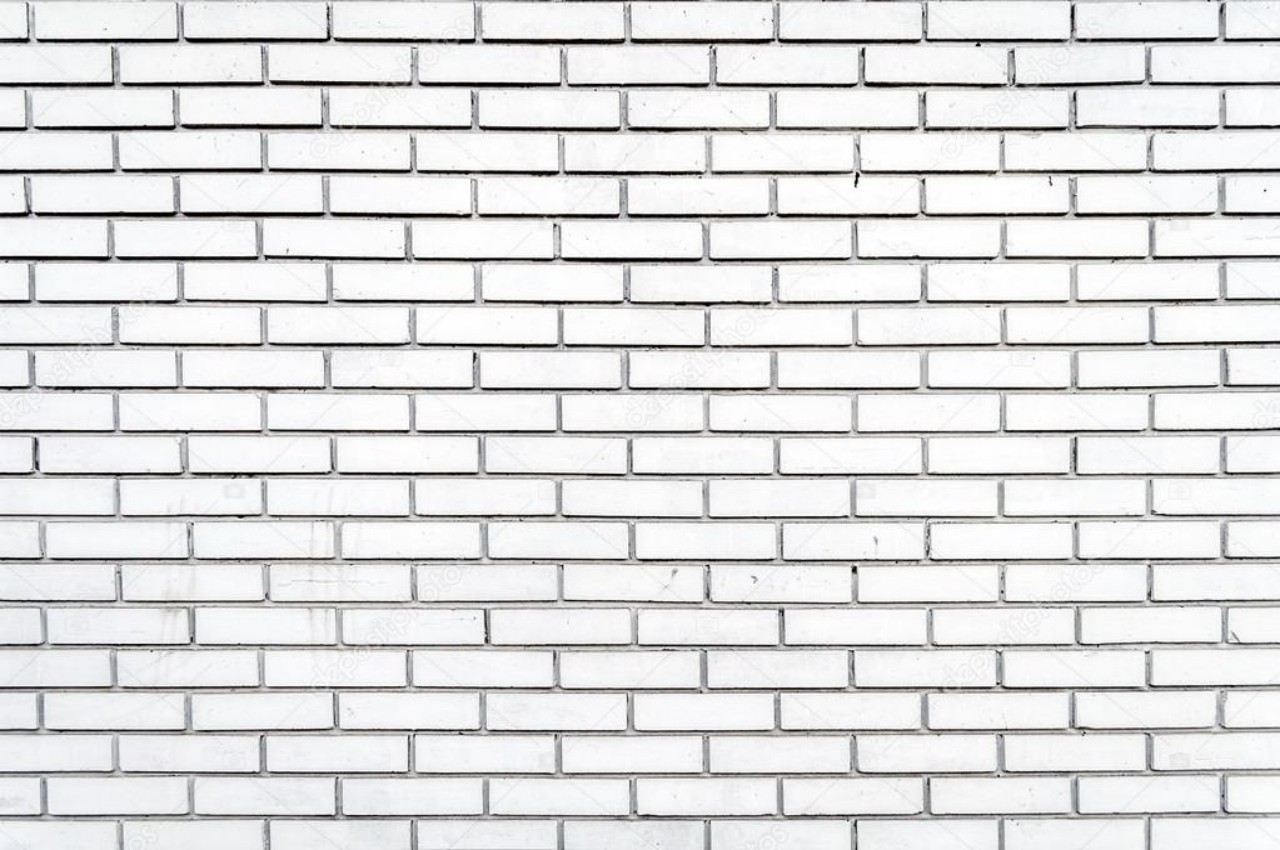
Designer: Bennian
White vinegar is one of the most effective cleaning agents as it is naturally acidic in nature and inhibits the growth of mold and mildew. Make a solution of equal parts of vinegar and water and spray the solution on the grout lines. Let the solution stay for five minutes and scrub the grout with a stiff brush. Wash the area with warm water and restore the original color of the grout. Make sure to dilute the vinegar in water as vinegar is highly acidic and tends to damage the tile and grout.
Steam Cleaning
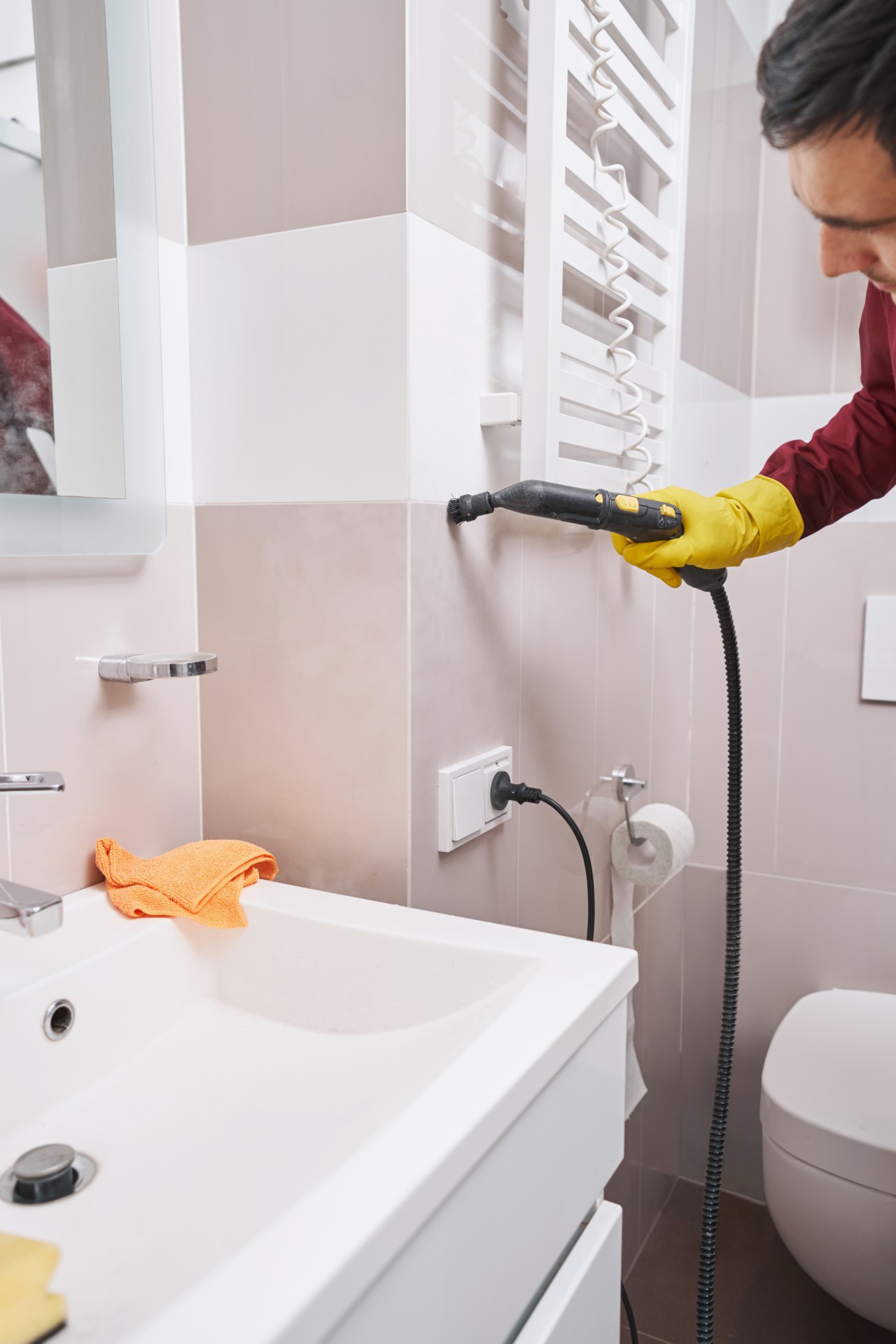
Via: Iakobchuk
To steam clean the grout, assemble and load the steam cleaner according to the manufacturer’s instructions, using only water and avoiding additional chemicals or cleaning solutions. Once the machine has heated up, turn on the steam function and run the cleaning brush along the grout lines, especially on the dirty areas of the grout applying a gentle scrubbing motion as you go. After steam cleaning, the marks should start to lift. Finally, use a rag or mop to thoroughly dry up the residual water.
Warm Water Spray

Designer: Emily Henderson
The gentlest cleaning option for tile grout is using warm water spray. Simply spray the water onto the tiled surface and gently scrub the grout lines using a soft bristle brush. Afterward, wipe the area with a dry cloth.
How to clean stubborn stains from the tile grout?
For old or stubborn stains that regular cleaning can’t remove, create a solution by thoroughly mixing 2 tablespoons of oxygenated bleach into 2 cups of warm water. Test the solution on a hidden area of grout to ensure it won’t cause discoloration. Apply the solution to a small area of stained grout lines, working in small sections and making more solutions as needed. Allow the cleaner to sit for up to 15 minutes to let it work, then scrub and rinse until all the cleaner is removed. Use firm pressure and make several passes over each grout line till the grout is clean.
How to prevent buildup on grout?

Via: minimalistbible
Despite daily efforts, body oils, and soap scum tend to stick to the tile and grout surfaces. To prevent mold and mildew buildup, it is important to clean and maintain the grout lines regularly, ensuring a neat and hygienic surface.
- To maintain cleanliness and eliminate mold and mildew spores, pour a small amount of rubbing alcohol on a cloth and wipe down the dirty grout and tiles at least once a week.
- Alternatively, create a paste with baking soda and water, and rub it onto the grout with a grout brush or a used toothbrush at least once in two weeks. Rinse with clean water.
For routine cleaning and maintenance, spray diluted vinegar on the grout at least once a week, and then wipe it with warm water. Additionally, periodic maintenance should involve applying sealers to the grout lines to fill the pores and keep them clean. However, ensure that the grout is completely dry before applying the grout sealer.




